CALCATA: See It, And You Will Never Be The Same Again
Think: Every Gorgeous Italian Instagram Photo You've Ever Seen, Only Real
The first time I saw Calcata was on a writers’ retreat in Italy. The organizer had chartered a bus, and as we rounded the curve of a mostly one-lane mountain road, the clouds parted and a ray of sunshine poured out of those Renaissance skies, illuminating a tree-filled valley. A medieval village was perched on a fist of volcanic rock that rose high above the valley floor, its base festooned by drifts of fog.
I was instantly, even violently, in love.
As we drew closer, I could see the crenellated battlements of a castle. From the parking lot, a cobblestone path led to a medieval archway. We piled off the bus and headed toward the village, dazed in the way of Americans who have never seen real beauty before. A feral cat darted past my feet. Pigeons cooed and flapped around the village’s ancient walls, which soared gloomily above our heads as we panted up the hill.
The path took us to a piazza, deserted except for a few locals. To the right was a flight of steps leading a 15th century church. To the left and directly in front of us were narrow cobblestone streets, the ends of which disappeared into yet more alleyways. The air smelled of wood smoke and wet stone and must.
I stood there, speechless, filled with a sense of longing. It was like being on the backlot of Universal Studios, if Universal had managed to painstakingly recreate something very old and very beautiful and very very Italian.
While the rest of my writer buddies were herded into a teashop, I sat on the church steps, taking it in. I didn’t want tea. I just wanted to feel the sun on my face and bask in the pure joy of being alive.
It was that moment when I met my boyfriend, an American jazz drummer, who’d lived in Calcata for many years. Our connection was powerful and immediate … and the stuff of another story. For two years, we dated long-distance. Then one day, he asked me to move to Italy to be with him.
I said yes.
A LITTLE HISTORY
Calcata used to be a site of great veneration, containing as it did a jeweled reliquary with the foreskin of Christ. In 1527, a German soldier who’d sacked Rome, took the reliquary, and then fled to Calcata where he was eventually found. Before he was dragged away, the soldier hid the reliquary inside the cave he’d been hiding in, where it was rediscovered in 1557.
By1983, Don Dario Magnoni, the parish priest, declared that the relic had vanished. This led to speculation that he may have sold it, especially when it came out that he’d been keeping the reliquary in a shoebox in the back of his closet.
But that wasn’t the beginning or the end of Calcata’s troubles. In the 1930s, the Italian government determined the volcanic cliff that Calcata was built upon was in danger of collapsing. Calcata’s residents were forced to move to nearby Calcata Nuova, or “New Calcata” where they built a lot of charmless, utilitarian houses. By the sixties, squatters arrived, mostly hippies, artists, and drug addicts. Some legally formalized their residences by purchasing them for a few hundred euros and then secretly annexing neighboring caves or painting psychedelic imagery on old stone walls.
When I moved to Calcata in 2014, it had already become a tourist destination for Romans who made the forty-five kilometer trip to dine in one of its restaurants and “make a day” of the hippie life. Most of the beatniks who’d settled there in the sixties were older now. It is easy to be young and poor, but to be old and poor lent a kind of desperation to the village, a hunger for those tasty tourist euros. The Italians have a term for that kind of desperation: morto di fame. Dead of hunger. We kind of all were.
My boyfriend’s apartment was situated above an overpriced restaurant called Il Graal. Across from us was Caffe Kafir, owned by one-time B-movie actor and all-around flamboyant, Gianni Macchia. Local artisan Marina Petrone sat outside painting knickknacks and keeping away from the loud, frequent arguments. There were always arguments. No secrets exist in a village on a rock.
Calcata had its local royal, a brilliant, cultured, and extremely rightwing prince, with whom I got into some epic rows over Black Lives Matter. One day, dressed in shorts, a pair of sandals, and a cloak that he’d artfully draped over one shoulder, he came out to the piazza to oversee some work being done there. For fifteen minutes, he shouted insults at the workers, calling them idiots and barbarians, until finally the foreman sneered, “Who the hell do you think you are?”
“Why, this is a prince,” one of his friends declared, expecting the foreman’s immediate contrition.
“Oh, yeah?” the foreman said. “If he’s a prince, I’m the Count of Monte Cristo.”
Calcata also had its crazies. One of them stood in the center of the piazza, streaming blood from a recent fisticuffs, and shouting obscenities at a visiting actors’ troupe. There was a man living in a cave that overlooked the valley who regularly terrorized people. One time, he brought up a gas can, sloshed petrol all over the piazza, and threatened to set it ablaze.
Then there was the lunatic whose bitter, thwarted love for a married woman compelled him to climb the roof one day, just so he could call her a whore. In Roman dialect, he loudly declared that she needed to wash her ass because it stank.
Cars mysteriously caught fire, more than a few. I came down the hill one cold, foggy morning to find the smoking hulk of someone’s car, rumored to have been torched by a local bar owner/drug-seller/snitch in retribution for something. My friend Pancho and his partner had both their cars set on fire, and to this day, no one really knows who did it.
There were summer solstice ceremonies where everyone sat in a circle in the middle of the piazza, singing songs and chanting. After the tourists went home, potluck dinners sprang up beneath our balcony, always with guitars and more singing. Sometimes Marina would prop her ancient television inside her doorway and people would gather to watch soccer.
What I loved most were the cave parties. Costantino Morosin, renowned artist and long-time resident of Calcata, used to throw some terrific get-togethers in the labyrinthine caves beneath his house. We’d all huddle around his beautiful stone oven, trying to stay warm.
During Christmas, Marina would create various tableaux in the piazza using her papier-mache people who looked particularly eerie if you were coming back from Rome, say, at five in the morning, and it was densely foggy, and you weren’t expecting to see anybody. One time, my boyfriend and I were so broke, we stole a handful of potatoes from one of her displays just so we could have something to eat.
In Calcata’s medieval past, desperate girls who’d gotten pregnant would jettison their babies out of their windows to the valley below. Pestilence came to Calcata, as did war. There were love affairs that ended in murder, property disputes, and reports of the supernatural. On Halloween, people come by the thousands to party in the piazza until dawn.
At dawn, I’ve stood on the parapet of Calcata and looked out over a rippling sea of pink-tinged fog, an experience I will never forget.
Eventually, lack of living space, humid conditions, and the inconvenience of living in Calcata prompted us to move about fifteen kilometers away where people are decidedly not crazy, but perhaps not as interesting either. Schlepping flats of water up those slippery cobblestones wore on us, as did the constant noise. Calcata Vecchia has no bank, post office, or grocery store. And there comes a point where one longs to wake up without the sound of people screaming.
I will always love Calcata. I am writing a book set in Calcata. Oddly, I have not been back since we moved away.
What one place in the world has captured your heart? Let me know in the comments below!





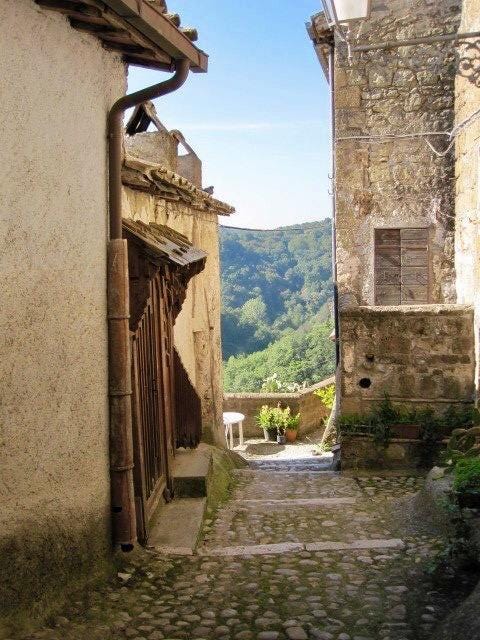

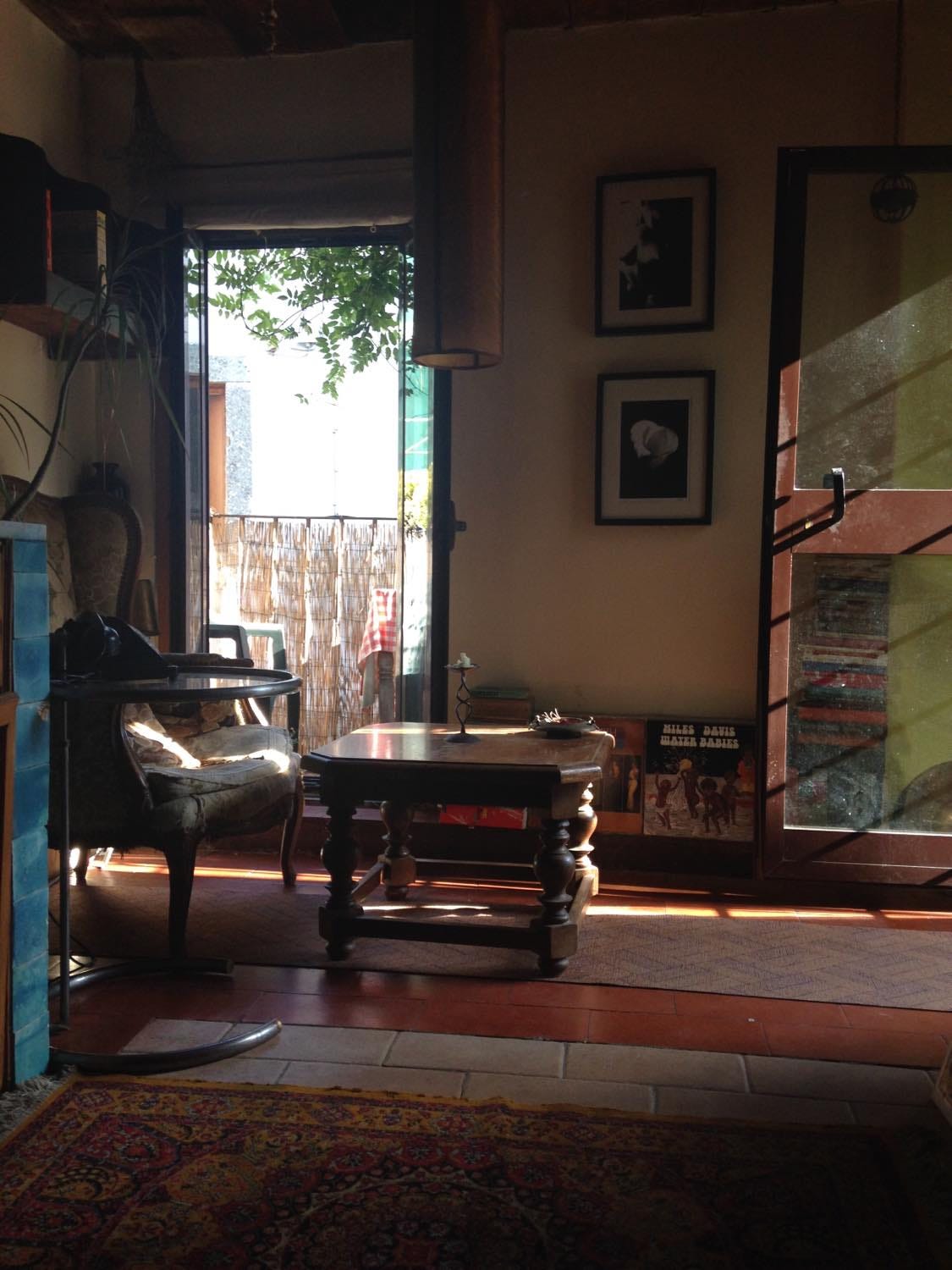
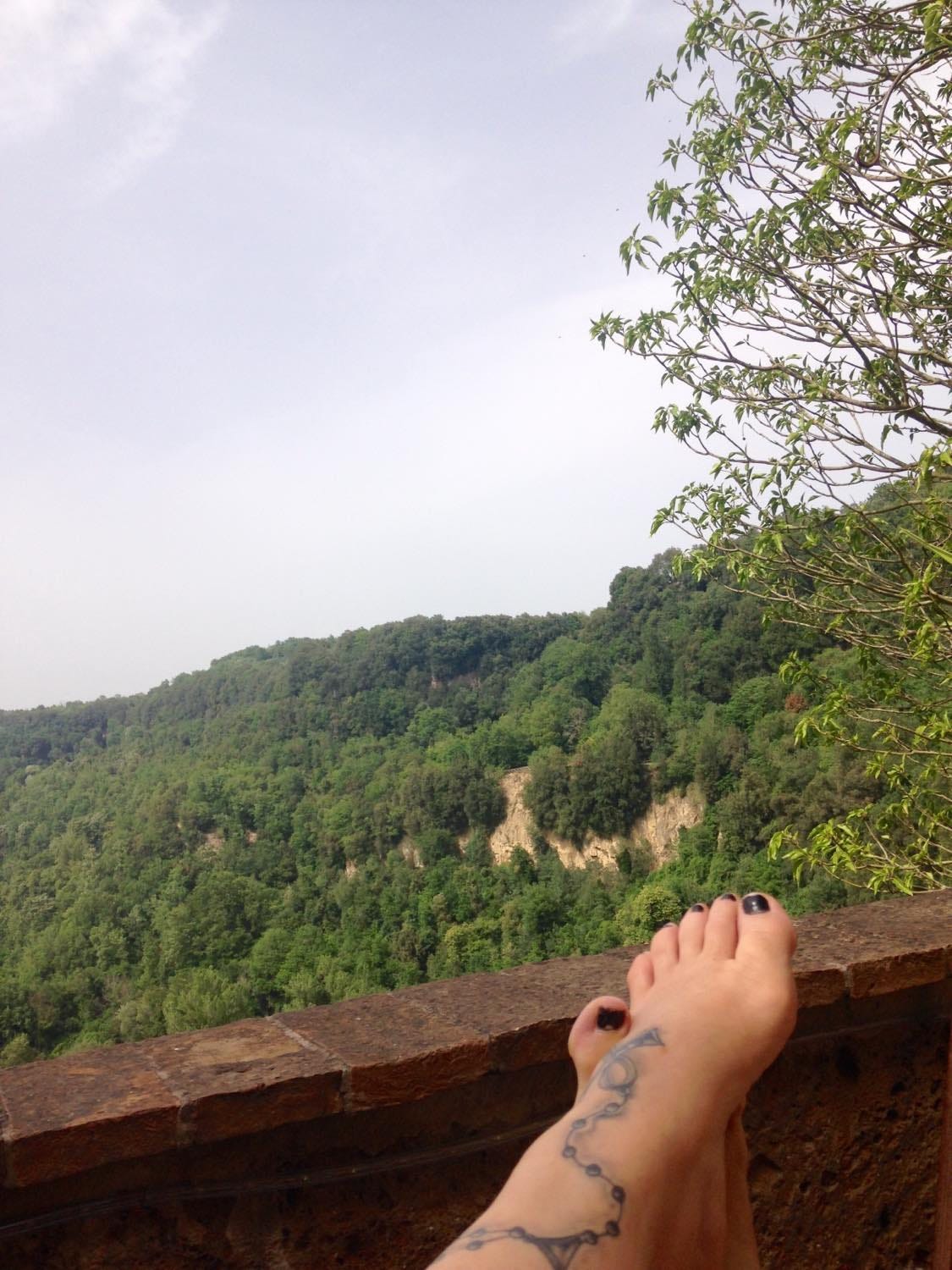
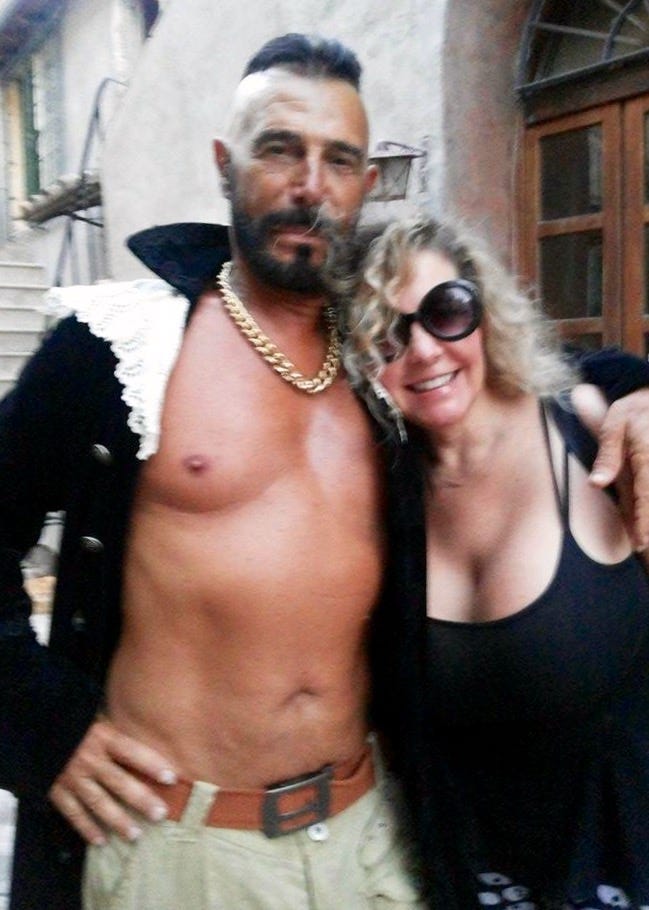
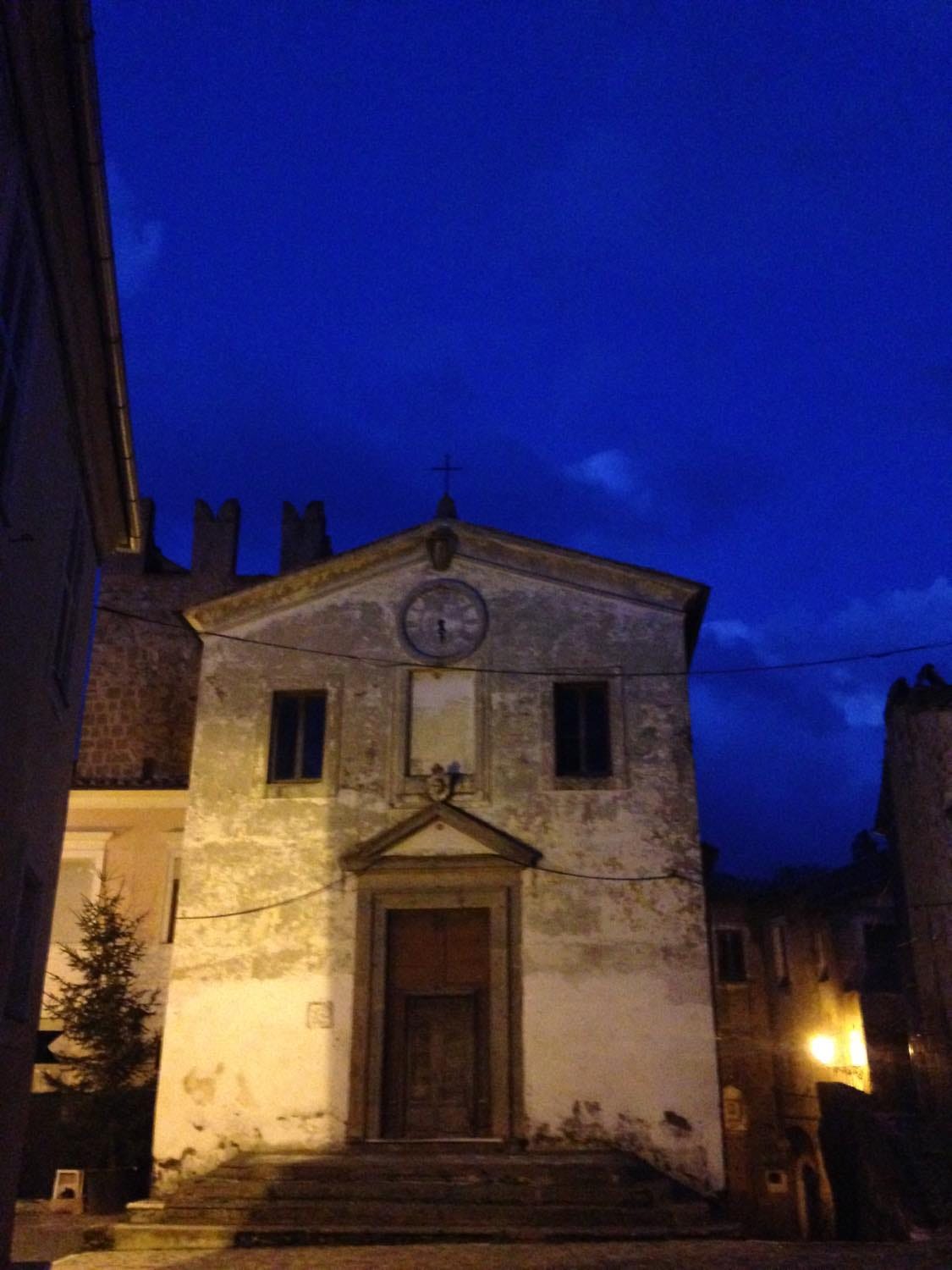




Siena... the first time I actually thought there were ghosts (despite scientific training!), I was standing at the Angle at Gettysburg, where the Confederates came over the wall at Cemetery Ridge during Pickett's Charge... and I swear the ground spoke to me. The second time the hairs on my neck sprang up was visiting Siena, realizing that the place had remained pretty much unchanged for 500 years. Pretty f*cking epic.